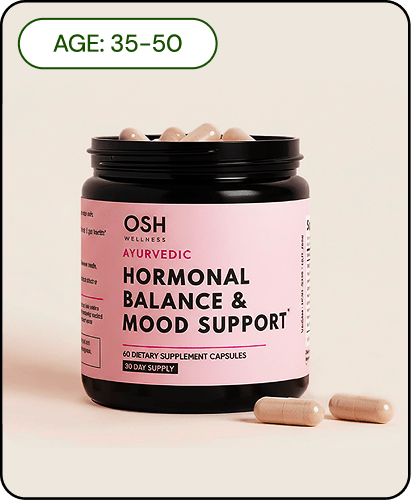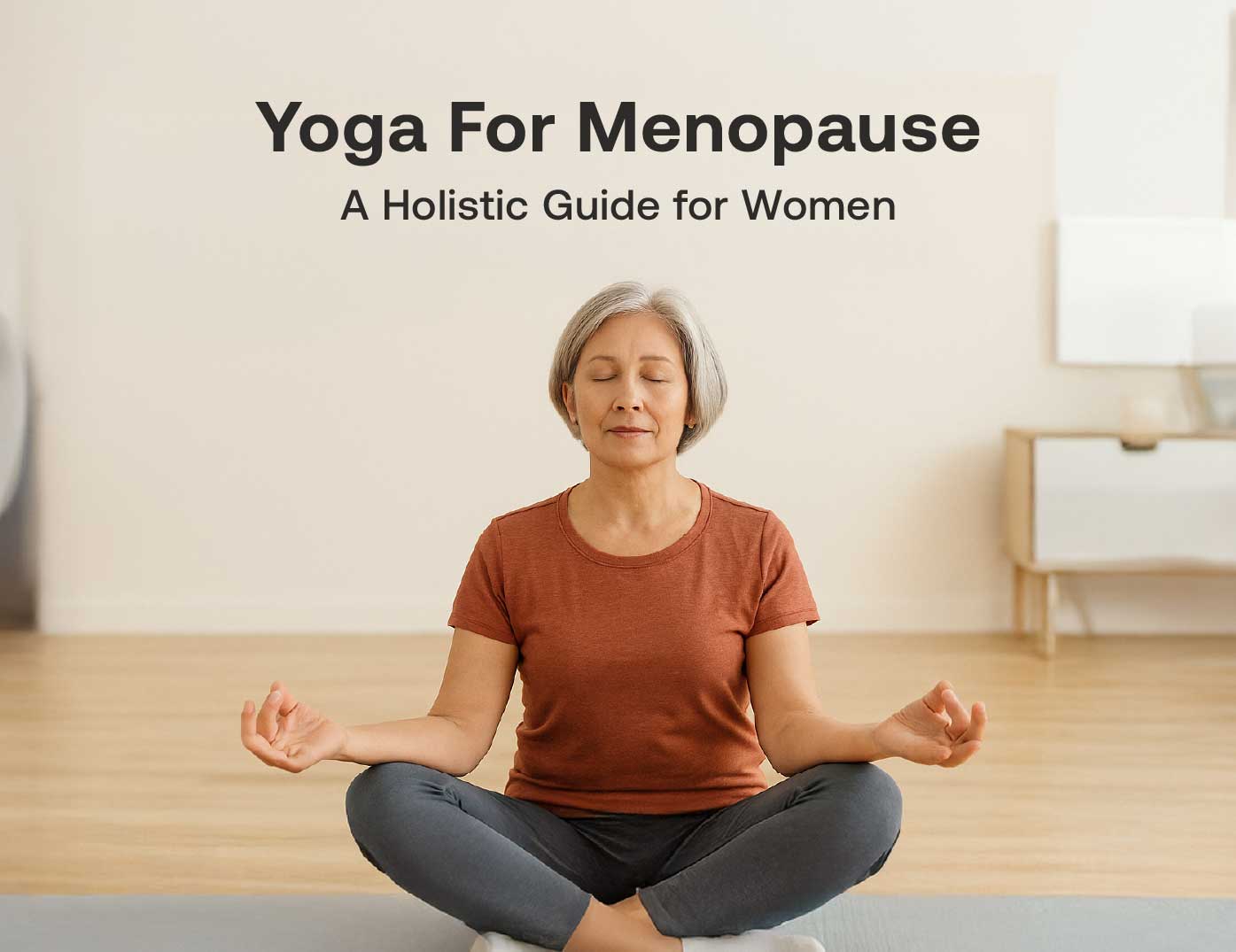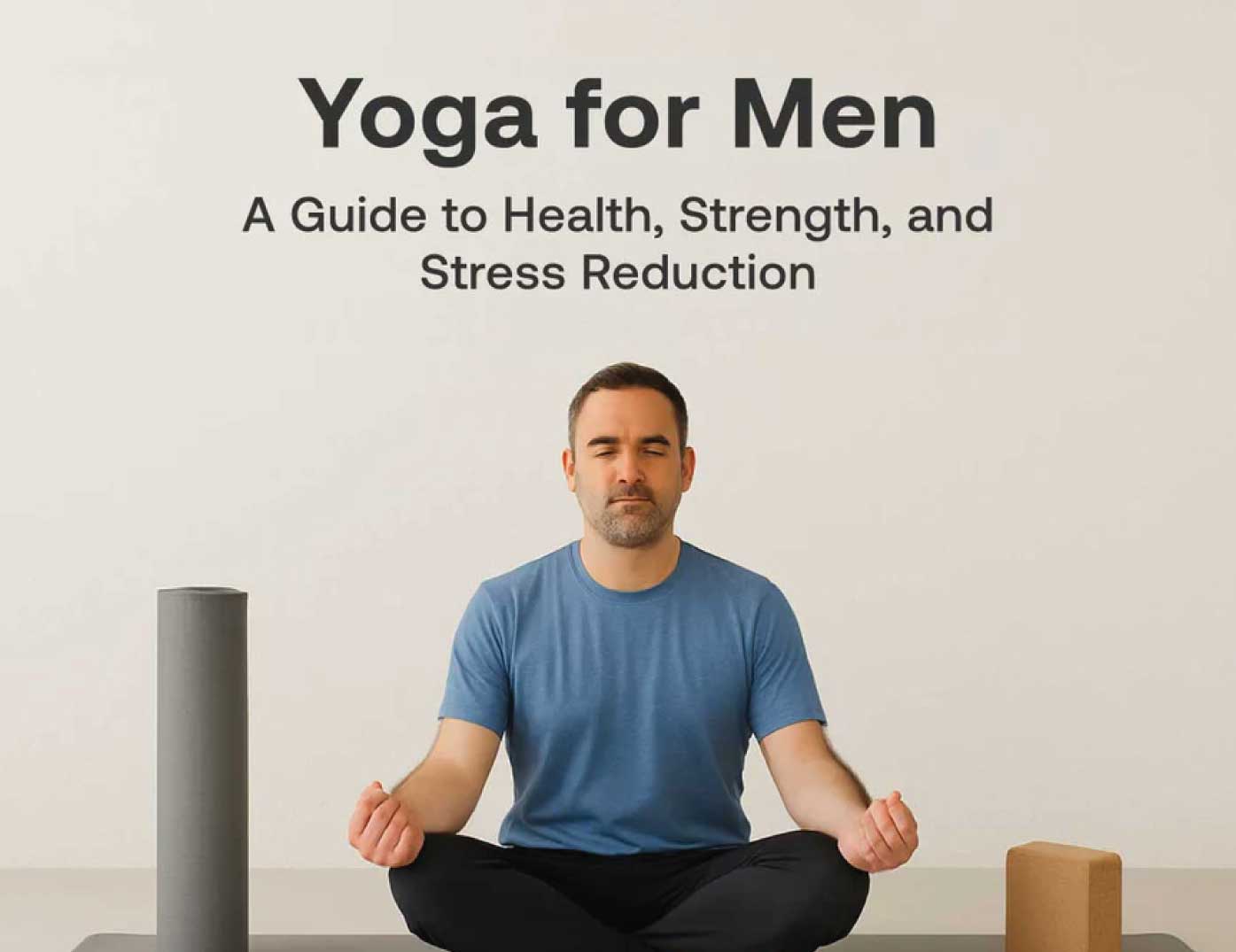Table of contents
As women journey through menopause, they often encounter a multitude of physical and emotional challenges. Symptoms such as hot flashes, mood swings, and insomnia can significantly impact daily life. Fortunately, yoga emerges as a powerful ally during this transitional phase, offering a blend of physical postures, breathing techniques, and meditation. This article delves into the myriad benefits of yoga for menopausal women, highlighting how this ancient practice can help restore balance and promote well-being in a natural, inclusive manner.
Understanding Menopause

Menopause is a significant life transition that signifies the conclusion of a woman's reproductive phase, typically occurring between the ages of 40 and 60. It is characterized by the permanent cessation of menstrual periods, marked by 12 consecutive months without menstruation. This transition results from declining ovarian function, leading to decreased production of reproductive hormones like estrogen and progesterone [1].
The stages of menopause can be divided into three phases:
Perimenopause: The initial phase that can begin several years before full menopause, often involving hormonal fluctuations, irregular periods, hot flashes, and mood swings.
Menopause: Officially begins after a woman has gone 12 months without menstruation.
Postmenopause: The stage following menopause, where health risks such as osteoporosis and cardiovascular concerns may increase due to lower estrogen levels[2].
Common symptoms include night sweats, irritability, cognitive changes, and sleep disturbances[3]. Management strategies span hormonal replacement therapy (HRT), lifestyle changes, and non-hormonal treatments tailored to individual needs[4]. Understanding these changes enables women to approach menopause with clarity and confidence.
The Role of Yoga in Women’s Health

Yoga offers a holistic approach to women's health, enhancing physical and emotional resilience during menopause. As women experience fluctuating hormones and new physical limitations, yoga provides tools that promote inner calm and physical strength.
Practices such as asanas (postures), pranayama (breathwork), and meditation contribute to reduced stress levels and improved emotional stability. Restorative yoga styles, in particular, have been shown to ease hot flashes and promote better sleep quality [5].
Additionally, yoga supports mental well-being by diminishing anxiety and depression, common during menopausal transitions[6]. Those who practice regularly report enhanced emotional resilience, energy levels, and quality of life [7].
Another key benefit is the sense of community it fosters. Group yoga sessions create a safe space for sharing, connection, and empathy. This collective experience enhances emotional healing and provides a sense of solidarity among participants [8].
Scientific Evidence Supporting Yoga for Menopause Relief
Mounting research validates the therapeutic impact of yoga on menopausal symptoms. One study conducted by Abiç et al. (2024) involved 62 women aged 40 to 60 who engaged in bi-weekly 60-minute yoga sessions over ten weeks. Participants experienced significant reductions in psychological, somatic, and urogenital symptoms, with median Menopause Rating Scale (MRS) scores dropping from 16 to 5 [9].
Further research shows yoga improves vasomotor symptoms, such as night sweats and insomnia. In a multicenter trial, yoga participants reported greater symptom relief and notable improvements in sleep quality[10]. A longer 12-week study echoed these findings, noting benefits across psychological and sleep-related domains [11].
These benefits stem from improved circulation, flexibility, and the activation of the body’s relaxation response. Yoga is thus a safe, effective, and emotionally satisfying method for managing menopause symptoms [12].
Key Yoga Poses for Menopause Relief

The following yoga poses are especially helpful in addressing menopausal discomfort:
Legs Up the Wall (Viparita Karani): A restorative inversion that enhances relaxation, reduces anxiety, and combats fatigue. Lie near a wall, place your legs vertically, and rest for 5–15 minutes [13].
Seated Forward Bend (Paschimottanasana): This pose stretches the spine and hamstrings, helping to calm the mind and relieve tension. Sit with legs extended, inhale, and hinge forward from the hips [14].
Reclining Bound Angle Pose (Supta Baddha Konasana): Opens the hips and supports deep relaxation. Lying on your back, bring your feet together and let your knees fall outward. Use pillows for support if needed [15].
Integrating these poses into a regular practice can help ease both physical stress and emotional turbulence, contributing to sustained well-being throughout menopause.
Best Practices for Incorporating Yoga

To reap the full benefits, consider these best practices for integrating yoga into your routine:
Practice at least three times a week for 30-60 minutes to reduce psychological and urogenital symptoms [9].
Opt for restorative and gentle styles like Yin or Hatha yoga that address hot flashes, anxiety, and emotional changes [15].
Incorporate cooling breathwork techniques like Sitali pranayama to reduce heat and tension [16].
Adjust routines based on your body’s needs; shorter sessions may be better on low-energy days [5].
Seek guidance from certified instructors who specialize in therapeutic yoga for menopause [5].
With mindfulness and consistency, yoga can become a powerful tool in managing the physical and emotional shifts of menopause.
Addressing Potential Challenges

Despite its benefits, adopting yoga during menopause can present certain challenges :
Physical limitations: Joint stiffness, muscular aches, and sensitivity to heat can inhibit poses and energy levels [9].
Time constraints: Many women balance work, family, and caregiving, leaving little time for self-care [17].
Emotional barriers: Mood swings, lack of motivation, and self-doubt may deter women from beginning or continuing their practice [13].
To overcome these hurdles:
Modify the practice using props and simplified poses to suit changes in flexibility and strength.
Explore short, flexible routines that can be practiced at home to fit into busy schedules [7].
Prioritize emotional support through group sessions or online communities that understand menopausal transitions [7].
By making small, intentional adjustments and practicing self-compassion, women can maintain consistency and achieve positive outcomes through yoga.
Relevant Products
Explore Osh Wellness Hormone & Mood Support, a product crafted to complement your yoga journey. It supports hormonal balance, combats mood swings, and enhances emotional wellness for a well-rounded menopause management plan.
Conclusions

Yoga stands out as a transformative companion for women navigating the multidimensional challenges of menopause. It offers far more than physical relief — fostering mindfulness , emotional strength , and community support . By integrating yoga into their daily lives, women can embrace this life transition with confidence, renewed vitality, and grace.
FAQs
What are the best times to practice yoga for menopause relief?
Morning or evening sessions may help reduce anxiety and promote better sleep.
Can yoga completely alleviate menopause symptoms?
While not a cure, yoga significantly eases symptoms and enhances quality of life.
Do I need prior experience to start practicing these poses?
No, beginners can start with basic postures and build gradually.
How often should I practice yoga for effective results?
At least 2–3 times a week is recommended for noticeable benefits.
Are there modifications for beginners or those with physical limitations?
Yes, props and supportive poses can help tailor the practice safely.







